What do all of the best brands have in common?
They’ve got both lovers and haters. And not many people in between. Why? Because great brands stand for something and are targeted at specific audiences. They aren’t trying to be everything for everyone.
That’s why ideal customer profiles (ICs) and personas are so essential to the branding process. They allow brands to refine their focus by taking a detailed look at who their customers are, what they care about, and what motivates them to engage with a brand.
With an ICP and personas in place, it becomes much easier to determine if the brand strategy that you’re developing will resonate with your customers.
There are trickle down benefits as well, of course. As a recent report from WARC demonstrated, branding increases the impact of both marketing and sales. In fact, they said that companies that shift from a performance marketing focused approach to one that emphasizes both brand and performance experience a median revenue ROI increase of 90%. 
Specific benefits of ideal customer profiles and personas
The same is true for ICPs and personas. Defining them and building your brand around them will provide clarity to your marketing, sales, and customer success teams; improving their efficiency and effectiveness.
Here are a few of the specific benefits for each area of the business.
Branding benefits
- Clearly defined audience motivations clarify what elements of the brand are most important to emphasize in the brand essence and other brand drivers
- Exploring the motivations, need, desires, and turnoffs of your ideal customers allows you to design your brand benefit ladder around emotions that will build more brand loyalty and equity
- Understanding your ICP allows you to develop a more focused brand implementation plan
Marketing benefits
- A well designed ICP paired with personas gives your performance marketers clear and specific ad targeting parameters - enhancing campaign performance
- This work also feeds into the key questions that must be addressed in content and marketing materials
- An understanding of the roles that must be targeted to successfully close a deal creates deeper alignment between sales and marketing
- Clear audience definition builds guardrails that can used to evaluate the relevance of future marketing efforts or channels
Sales Benefits
- ICP provides crystal clear lead qualification standards
- Clear ideal customer definition along with personas gives sales teams a matrix to utilize during active prospecting
- Sales enablement is simplified because clear audience focus allows you to build templated sales presentations and process to meet the needs of your ICP
Customer Success Benefits
- Consistency of customer type and industry that allows you to create a playbook that will work for the majority of potential customers (there will always be some exceptions)
- Customers that are likely to work well with the company framework because they match the profile of clients that you’ve successfully served in the past

What’s included in an ideal customer profile?
Every ICP is a combination of objective information that can be quantified and searched for, as well as more subjective information about the non-measurable factors that your most valuable customers all share. You must include both to get the maximum value out of your ICP.
The objective facts
Any ideal customer profile should be targeted by the following elements:
- Revenue
- Employee count
- Geography
- Industry verticals
- Product type
- Sales targets
- Other requirements you may brainstorm
Once you’ve identified the objective facts, you should be able to search and find 500-1,000 companies that match your criteria using a prospecting tool like Zoominfo or Seamless.ai.
Next, it’s time to unpack the subjectives.
The subjectives
Think about the subjective stuff that can’t be found in a simple Google search. These are all the little details that move your ICP beyond a catalog of industry verticals you want to work with to a detailed sketch of the unique type of company that you can successfully serve. We typically think through the following factors:
- Key roles that must be in place for you to succeed
- Ideal team makeup and size
- Philosophies or mindsets that prospective customers must have
- Organizational pressures or pain points that must exist
- Buyer’s committee makeup
- Purchasing power

What’s included in a persona?
Once you have your ICP defined, it’s now time to focus on personas. While an ICP defines the type of company you work with, your personas should feature the specific roles within those companies that you must reach with your brand.
At A Brave New, our personas include details about the following:
- The role of the persona within the organization
- The role they play in a buying decision
- Their job focus
- Their day-to-day reality (including pressures they face)
- Their goals
- Their desires
- Their pain points / concerns
How to start building your ICP
We recommend a data-centric approach to defining the objective elements of the ICP and a combined collaborative and data-driven approach to the subjective factors.
Data feeds objective facts
The best way to define the measurable aspects of your ideal customer profile is to analyze your customer base and identify what all successful customers have in common. This can be as simple as pulling the data and doing the analysis yourself. Ask questions like:
- Are successful customers a certain size?
- Do they typically fall in a specific revenue range?
- Where are they typically located?
- What industry verticals are they in?
Typically, this type of ad hoc analysis will get you 95% towards what you need. But if you want to get to 100% and discover any hidden factors that all of your best customers have in common, I suggest bringing in an analyst. They can do a more detailed dive into all of the available data points. You might be surprised by what you find.
Drawing out subjective factors
The subjective elements of an ICP are easier to think of but much harder to verify. These are all the elements that come out as you get to know a client but are not immediately apparent during a Google search.
It’s important to ground even the subjectives in data as much as possible, though. My recommendation is to work with your business analytics or sales team to review your existing highest performing clients to determine which subjective factors all of them share. Asking a few different questions can help:
- Why were you able to be successful with the customer?
- What about their approach made you a good fit for them?
- What specifically made your relationship strong?
Having these discussions will help you identify key commonalities between all of your best customers that need to be present in future customers. Capture them in a list, add them to the objective facts, and you’ll see your ideal customer come into focus.
Once you’ve written down your ICP, roll it out with your team. Be consistent and stick to it. Don’t allow yourself to get distracted by other types of customers that will bog you down and slow your growth. The right kind of growth will follow, growth that can be sustained by sales, marketing, and customer success.
Moving on to personas
With an ICP in place you should have a pretty good idea of the 3-4 most important roles within a customer that you must win over in order to establish an effective working relationship. Each of these roles should get their own persona.
We are a big fan of using qualitative research to build personas. Our specific research tool of choice is in-depth interviews with the customers that love you the most. Why? Because we want to build a brand that attracts more of these people. Follow these steps:
- Schedule interviews with at least 5 customers for each persona
- Talk with them about things like:
- How they initially found you
- What challenges they were trying to solve before they hired you
- What their goals are for their role
- What keeps them up at night
- What they love about you
- What they find surprising
- What they think your strengths are, and your weaknesses
- What the world would miss if you didn’t exist
- What they would miss
- Use the interview findings as well as more quantitative data about the specific roles you’re focused on to develop your personas
Does this all seem like a lot of work?
If you’ve read to the bottom of this post and find yourself agreeing with the importance of an ICP and personas for branding, but also overwhelmed by all the work, we have good news. This is one of our core brand research offerings.
We’d love to have a chat with you about how we might be able to accelerate your efforts and help bring your ideal customers into focus. You can book a consultation here.
This blog post was originally published on May 13, 2021. It was updated with new data and information for increased relevance and clarity on April 9, 2025.
Don’t miss out, get Brave News now
Join the ABN community and be the first to learn about trends in inbound marketing, branding, and web design.







